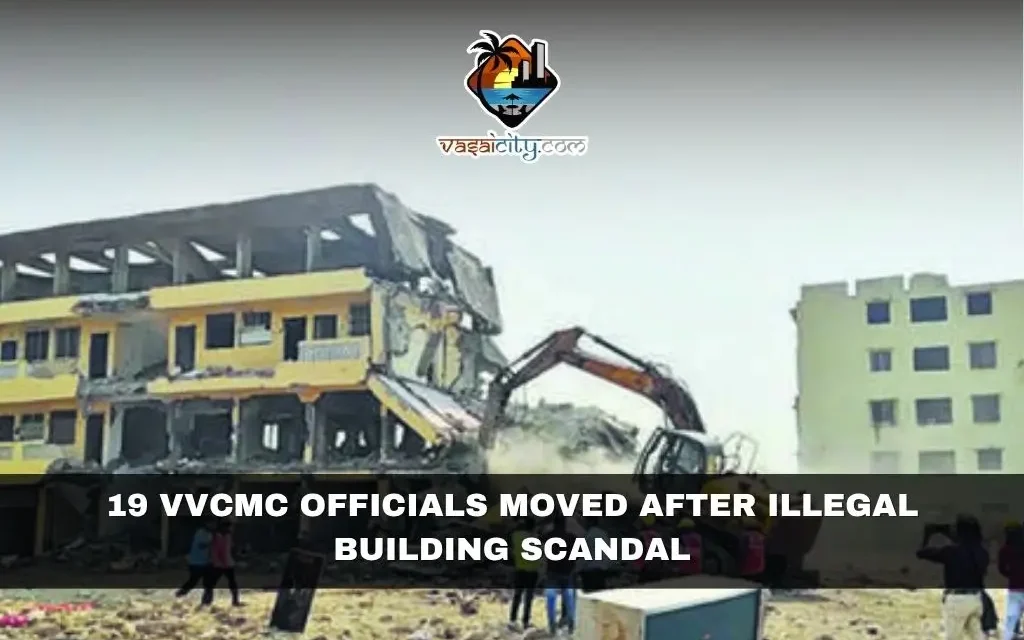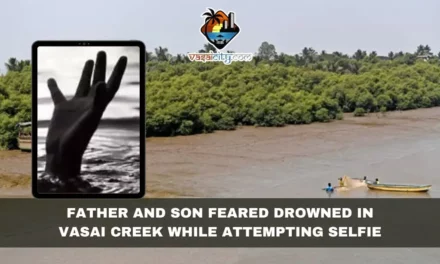In a sweeping move by the Vasai Virar City Municipal Corporation (VVCMC), 19 staff members from the town planning department have been transferred. This major decision comes in the wake of an investigation by the Enforcement Directorate (ED) that unearthed a large-scale illegal construction racket running since 2009.
The ED’s probe has shaken the civic administration of Vasai-Virar. At the heart of the matter are 41 unauthorized buildings that were reportedly built on public and private land meant for crucial infrastructure projects like sewage treatment and dumping grounds.
What’s even more shocking is the involvement of top civic officials. One of the key names that emerged during the investigation is YS Reddy, the Deputy Director of Town Planning. In raids conducted at Reddy’s residence and other properties earlier this month, the ED recovered a staggering ₹8.6 crore in cash, diamond-studded jewellery, and bullion worth ₹23.25 crore.
This led investigators to dig deeper into the town planning department, which plays a crucial role in granting permissions and overseeing construction activity in the rapidly urbanizing Vasai-Virar region.
How the Scam Unfolded
The illegal buildings in question didn’t just pop up overnight. According to ED officials, the unauthorized constructions were gradually built over the last 15 years – since 2009. What makes this particularly troubling is that the buildings were erected on land reserved for essential public services.
These plots were earmarked for projects like sewage treatment facilities and garbage disposal units – both vital for maintaining public health and city infrastructure. Instead, they were used to raise residential and commercial buildings illegally, allegedly with help from some in the municipal administration.
As part of the investigation, the ED zeroed in on several employees who had been working in the town planning department for many years – some without a single transfer in over three years. The long, uninterrupted tenures in one department raised questions about the level of influence and the possibility of deep-rooted collusion.
The Transfers
In a significant step toward accountability, VVCMC Commissioner Anilkumar Pawar transferred 19 employees from the town planning department. This action was taken after Pawar met Kuldeep Vartak, the former president of the Vasai Virar Youth Congress.
Vartak reportedly highlighted that some of the officials had been holding onto their positions for unusually long durations, which is against general transfer policies. It was after this meeting that the commissioner reviewed staff records and decided to act.
“These employees had overstayed in their posts, and we believe rotation is essential to maintain transparency and avoid opportunities for malpractice,” Pawar stated after the decision.
The transferred staff will now serve in other departments within the civic body, although their specific new roles were not made public.
A Push for Reform
Speaking to reporters, Kuldeep Vartak said, “This move is a step in the right direction. We have been raising our voice against unchecked illegal construction for years. With these transfers, the town planning department has a chance to clean up its image and operations. We hope the menace of unauthorized buildings is now brought under control.”
Vartak emphasized that several complaints about illegal construction had gone unheard for years. The ED’s findings simply validated what many locals had suspected for a long time – that some civic officials were turning a blind eye, or worse, facilitating illegal activities in exchange for personal gains.
Commissioner’s Assurances
Commissioner Pawar, who has only recently taken over administrative responsibilities, said he is determined to make the department more citizen-centric. He assured the public that transparency and integrity would be the top priorities going forward.
“We want to rebuild public trust. The planning department is responsible for shaping the city’s future, and we can’t allow it to become a playground for corruption. These transfers are only the beginning. Further internal reviews are ongoing, and strict action will follow wherever needed,” Pawar stated.
He also mentioned that the administration is considering digitizing construction approval processes to reduce human interference and improve accountability.
What Lies Ahead
The illegal construction issue in Vasai-Virar isn’t just about a few buildings or a few corrupt officials – it reflects a deeper issue of unchecked urban growth, weak regulatory mechanisms, and systemic failure.
The ED’s involvement and findings have acted as a much-needed wake-up call. For years, citizens and local activists had raised concerns about rapid construction in areas that lacked basic amenities like sewage lines, roads, or even legal electricity connections.
Now, with officials being held accountable and processes being questioned, there’s a glimmer of hope for residents who have long felt powerless against unauthorized builders and inactive civic authorities.
The civic body has also indicated it may initiate demolitions or legal proceedings against builders who have violated the law. However, such actions are usually long-drawn, with builders often seeking court relief.
Still, activists and residents alike believe this is a start.
As Vartak summed up: “We have a long way to go. But for now, even this shake-up feels like justice in motion.”
This story will continue to develop as the VVCMC rolls out further reforms and the ED moves ahead with legal proceedings. But one thing is clear- the days of silent corruption in Vasai-Virar’s town planning office may finally be numbered.








